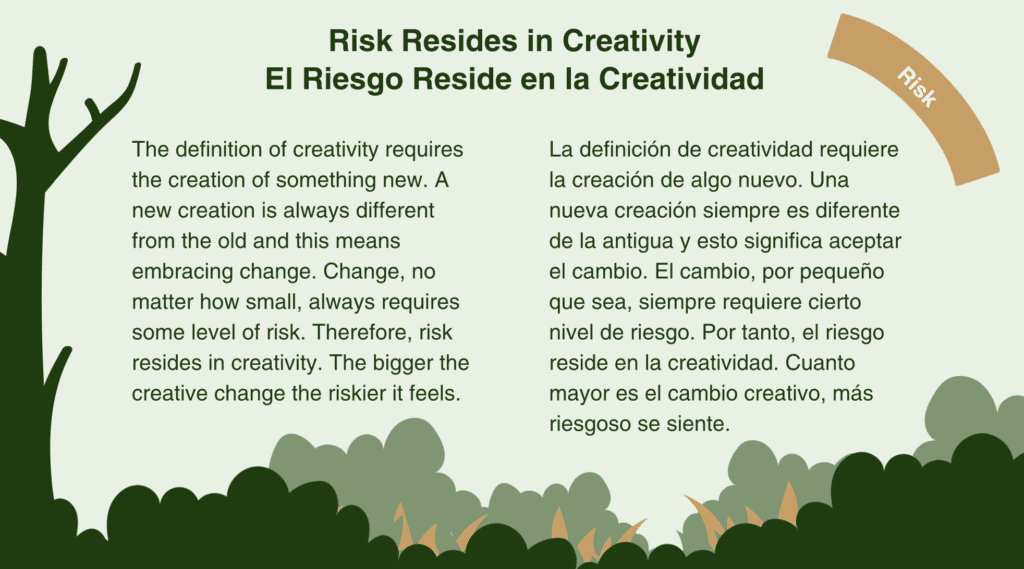Risk for Creativity
Risk is one of the essential skills for boosting creativity, as outlined in the Create 8 framework. Whether you’re tackling a challenging task, taking action, or weighing the consequences, developing your risk-taking abilities is crucial.

Creativity involves change, and change inherently involves risk. Create 8 embraces the risk inherent in any creative act. The fear of failure and shame often makes risk-taking challenging. However, failure is a critical component of learning and enhancing creativity. Taking calculated risks is necessary to understand and improve your creative process.
Humans are not naturally adept at risk assessment. We tend to overestimate our influence on events that are largely due to chance, spending less time evaluating possible risks. Therefore, dedicating time to generating ideas related to risk can improve your ability to assess and navigate through it. Practicing risk assessment in relation to your ideas supports the adventurous risk-taking needed to enhance creativity. It’s beneficial to practice risk-taking when the stakes are low
Practice Risk: What Type of Risk Is This?
To practice risk, start with a decision that has a low level of risk. For example, consider trying a new meal for dinner. Look into the future and imagine potential problems that could arise while serving this new meal. Make a list of the possible outcomes and categorize them into three types of risk: preventable risk, strategy risk, and external risk.
Preventable Risks: These are risks that can be easily avoided. In the new meal example, a preventable risk might be selecting a food that you know family members dislike.
Strategy Risks: These require some form of intervention to lessen the associated risk. For instance, adding butter or salt to enhance the taste of the food might mitigate a strategy risk.
External Risks: These are risks that can’t be planned for but are possible outcomes. In our meal prep example, an external risk might include a family member throwing the meal away, dumping it on the floor, or even tossing it in your face. Consider how you might react to these outrageous risks. Also, think about positive external risks, such as your child leaping to their feet, embracing you, and exclaiming, “This meal is unbelievable!”
Follow through with the meal preparation and presentation. Assess your risk predictions and note what actually happened. This practice will boost your risk assessment abilities in the future.
Risk Meditation
Sit comfortably and try this meditation called 4, 7, 8 Breathing.
Close your eyes or lower your vision.
Inhale through your nose for a count of 4.
Hold your breath for a count of 7.
Exhale completely through your mouth, making a whooshing sound, for a count of 8.
Continue this pattern (breathing in for 4, holding for 7, and exhaling for 8) for five more sets. When your mind wanders, simply bring your attention back to your breath. This meditation can help you stay calm and focused, enhancing your ability to take and assess risks
Living Creatively
Risk-taking is an essential skill for enhancing creativity, as highlighted in the Create 8 framework. Engaging in creative activities inherently involves change and risk, and the fear of failure often makes risk-taking difficult. However, failure is a necessary part of learning and improving creativity. Practicing calculated risks helps in understanding and refining your creative process.
To practice risk-taking, start with low-stakes decisions, such as trying a new meal for dinner. Additionally, practicing 4, 7, 8 Breathing meditation can help maintain calm and focus, which is beneficial for risk-taking and assessment. Practices such as these aid in staying composed and improving risk evaluation capabilities.